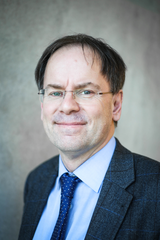Has the University of Erfurt not yet had any idea where it wants to take its research?
If it did, then that would certainly not be a good sign. As a university, we would not have been able to take many development steps in recent years if we had not had an idea of the "where to" of our research. But the development of a research profile strategy has now given us the chance to evaluate our status as a research institution and to continue with clear goals. In the process, numerous new strengths have emerged, particularly in the past few years, in which we as a university have clearly made gains in the area of research. But there were and are, of course, always opportunities for development. And as a university, we must always face new challenges with regard to research. So the new strategy came about as a result of critical self-evaluation and with a view to the future. We believe, and the committees that deliberated and ultimately decided on the strategy also see it this way: for the coming years, we can set forward-looking accents with what we have now set out to do, as it says in the strategy "with a view to a changing research landscape and a changing society".
How was the research profile strategy developed – who was involved, how did the process go?
Research rests on many shoulders, so many people must be able to advise on how the university should develop as a research location. The committees, and in this case that means the Research Committee and the Senate, were not only heard, but also made a substantial contribution. We also discussed the overall concept of such a strategy relatively early in the process in a round with academics. The discussions in the Presidium also made it clear to us once again how diverse research is at the university and which different perspectives have to be taken into account for such a strategy paper. That is, depending on whether we are talking about basic or application-oriented research, about research from a hermeneutic or empirical perspective. But that's what made the work process really interesting. Of course, the Presidium dealt with the strategy several times, and the Staff Unit Research and Graduate Services was also involved. In the end, it was the senate that decided. In other words, a strategy for the university from within the university!
And what are the main points of this strategy?
For one thing, the strategy commits the university to its three relatively new focus areas, which it developed from two focus areas in a comprehensive discussion process over the past decade. These are now being consolidated as profile fields and are thus shaping the structure of university research. At the same time, they are to be differentiated in the coming years and updated in terms of content with subdivisions.
In addition, the strategy defines four development paths that will guide and determine research and research funding in the future: In addition to the manifestation and further development of research locations and structures that have proven to be successful crystallisation points, such as research groups or research institutions, networking – both within the university and with external cooperation partners – is to be given even greater importance and promoted accordingly. Furthermore, the research-oriented promotion of young researchers is to be maintained and once again significantly strengthened, among other things through the early involvement of students in research, more comprehensive advisory services or the improvement of working conditions for our doctoral students and postdocs.
Finally, the university would like to make a greater contribution to society and conduct and promote dialogue with society through its research even more than before – e.g. through more research communication, more formats for the public or even citizen science approaches.
So research, the research structures at the university will not be turned upside down overnight, we were already on a good path?
In no case are we fundamentally reorganising the research structures. And there was and is no reason to do so. In recent years, we have built up and strengthened many structures, internal funding programmes and research facilities with great commitment from the entire university. The excellent research results, the very good third-party funding quotas – we are actually always above the margin we have set for ourselves for the respective year – and the University's significantly enhanced reputation as a research institution show that we are on the right track as far as research is concerned. We want to continue on this path. That's why we are continuing what convinced us yesterday into tomorrow.
Where do you see hurdles or challenges in the implementation?
In our view, three points are essential for this: Implementation is only possible if sufficient internal university funding is available. With the strategy paper, the university has set itself ambitious goals. In order to achieve them, joint efforts will be necessary in the coming years to be able to provide the necessary budgetary resources.
Research needs researchers, and that includes young scientists in particular. All universities must be attractive for young scientists, even become more attractive at all costs. The shortage of young scientists, which is already dramatically noticeable in many sectors, will not leave science and research unscathed.
Finally: The profile strategy formulates relatively abstract goals. Everyone at the university, and especially on the committees, is now called upon to help shape the concrete ways and instruments needed to implement the strategy and thus achieve its goals. This will be an exciting process that will certainly contribute to the further development and profiling of the University. It would be great if we not only succeeded in setting this milestone together, but also if the implementation, which is now pending, became a joint university project. Then some of the hurdles we will encounter along the way will be easy to overcome.
And what is the time horizon – how far into the future does the research profile strategy now before us plan?
The strategy is called "Research Profile Strategy 2030+ of the University of Erfurt", which already describes the time horizon. In concrete terms, this means that we want to take the outlined development steps gradually from the beginning of next year. To do this, we first need to underpin the strategic development steps with financial and non-material measures and instruments in order to be able to actively promote and support our academics. According to our experience so far, it will take a good five years to achieve partial goals in research, which will then lead to success in the following years.




